Shop by

Annual wildfires have ravaged the country in the past few years, taking over the news cycle each summer. Of the ten most expensive wildfires on record, only two occurred before 2017, according to the Insurance Information Institute. The Western states aren’t the only ones worried about fire season anymore. Smoky orange skies continue to trend online as winds carry smoke and ash thousands of miles across the nation. This previously-rare weather phenomenon is now to be expected every year.
The defining wildfire event of early 2025—the Palisades Fire—ignited in January due to extreme Santa Ana winds and record-low humidity. It quickly became one of the most devastating wildfires in California's history, destroying over 6,800 structures and forcing widespread evacuations. While California remains the epicenter of wildfire devastation, several other states have suffered major losses. In 2024, Alaska recorded the highest number of burned acres at 3.1 million, followed by New Mexico with 859,906 acres and Texas with 671,800 acres. Nationwide, the trend of increasing burned acreage continues, with climate change and prolonged drought fueling more intense fire seasons each year.
The 2025 wildfire season began with several destructive blazes, fueled by record-breaking drought conditions and extreme Santa Ana winds. Among the most significant wildfires were:
The ongoing megadrought and record-low rainfall have only worsened fire conditions, with climate experts warning that people should be cautious of wildfire season in the United States.
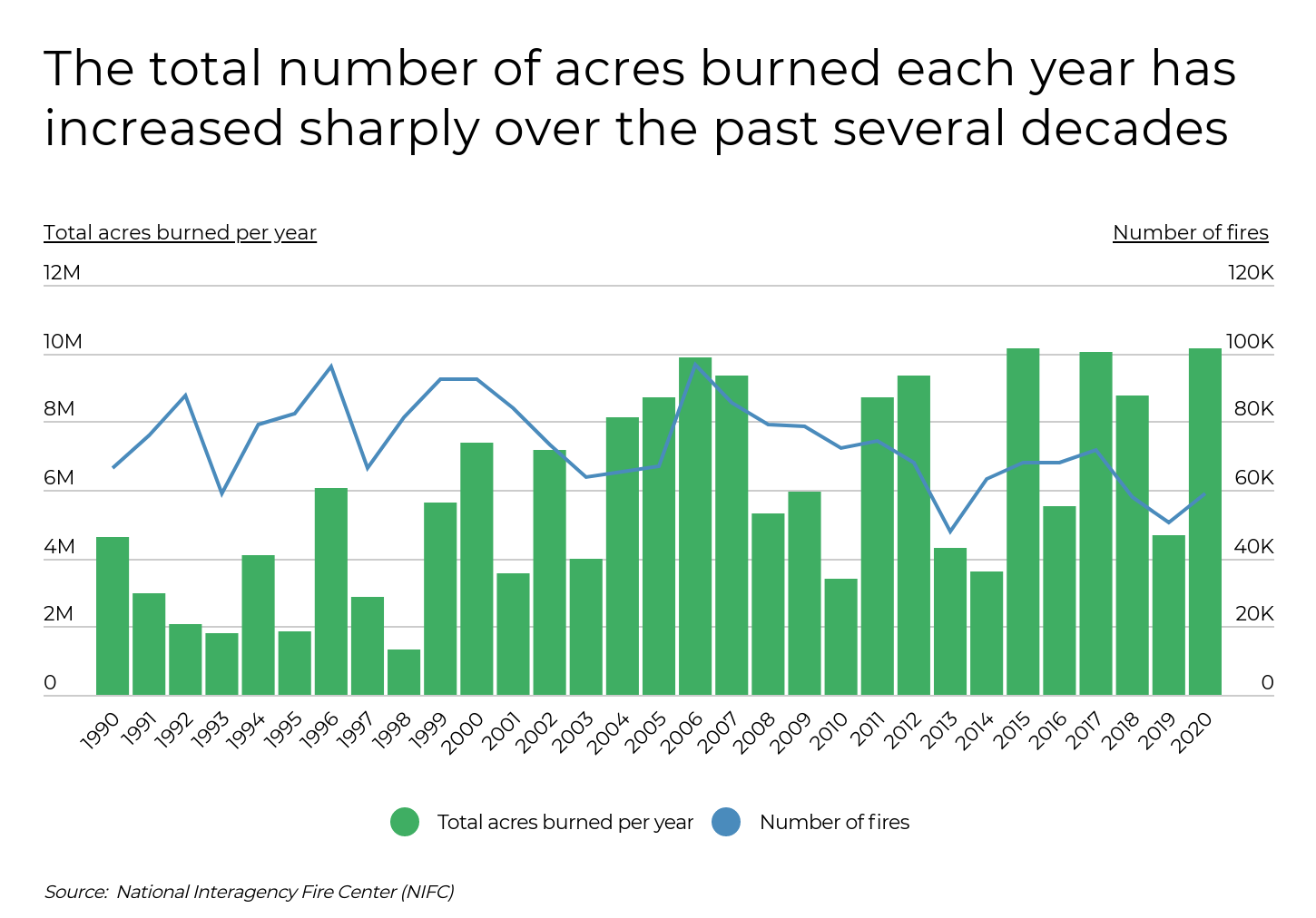
While lightning is an obvious cause of wildfires, the National Park Service has attributed nearly 85% of wildfires to human activity, including campfires, debris fires, powerlines, electrical malfunctions, cigarettes, and arson. When assessing the damage done by wildfires, though, lightning-caused fires have historically been more destructive. Data from the National Interagency Fire Center show that lightning accounted for the great majority of burned acres since 2001, though there have been several years where more land area was burned by human-caused fires.

The severity of wildfires is largely affected by climate conditions, and in 2021, several western states remain trapped in a persistent “megadrought.” Large portions of the region—including parts of Utah, Arizona, Nevada, California, New Mexico, Colorado, and Oregon—face “exceptional” levels of drought, which is the U.S. Drought Monitor's most severe category.
As of June 2023, Canadian wildfires are making headlines globally. Despite firefighting efforts from multiple countries, hundreds of wildfires continued to burn in Canada. Last Friday, 421 fires were still active, according to the Canadian Interagency Forest Fire Centre.
On Sunday, poor air quality returned to the north-eastern United States, although it was not as severe as the recent heavy haze caused by smoke from wildfires up north. At its peak, the air quality index (AQI) in New York City reached over 400 and was categorized as "hazardous," particularly for those with heart or lung problems. While air quality has generally improved since the previous week, measuring at 104 AQI, smoke inhalation is still a potential danger for millions of Americans.
In Pennsylvania, the state department of environmental protection declared an air quality action day and issued a code orange alert due to elevated ozone levels in multiple regions. Ozone forms when airborne chemicals react with sunlight; high levels are common during summer. The department advised vulnerable populations, such as young children and the elderly, to limit outdoor activities and conserve electricity.
The Maryland environmental department also issued a code orange alert for the Baltimore region, stating that the unhealthy air quality was due to ozone and smoke from wildfires.
Based on recent trends, California has been the state most threatened by wildfires, with over 40% of all burned acres in 2024 occuring within its borders. The state leads in wildfire-prone properties, with 2.1 million homes at risk-a number nearly three times higher than Texas (750,000), Colorado (380,000), and Arizona (250,000), according to the Insurance Information Institute.
However, wildfires affect each state differently. More sparsely populated states like Montana and Idaho, for example, have only the fifth-highest and ninth-highest number of properties at risk for wildfire damage, yet those properties represent between a quarter and a third of all properties in the state, whereas only 15% of properties in California are estimated to be at risk.
To determine the impact that wildfires have had on various states, researchers at Filterbuy compiled data from the National Interagency Fire Center and the U.S. Census Bureau for 2022, then ranked states by the total number of acres burned. Related data included in the analysis were the total number of fires, the burned acreage as a proportion of the state’s total land area, and human-caused fire acreage as a proportion of total fire acreage.
Here are the 15 states that were hit hardest by wildfires last year.
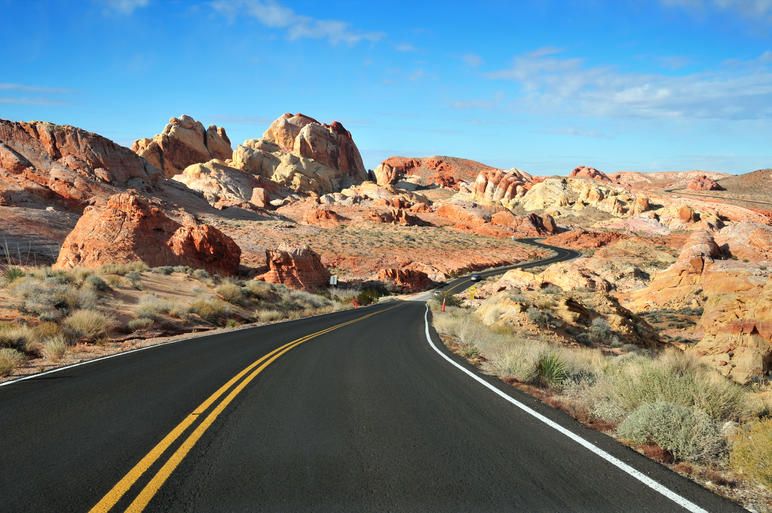

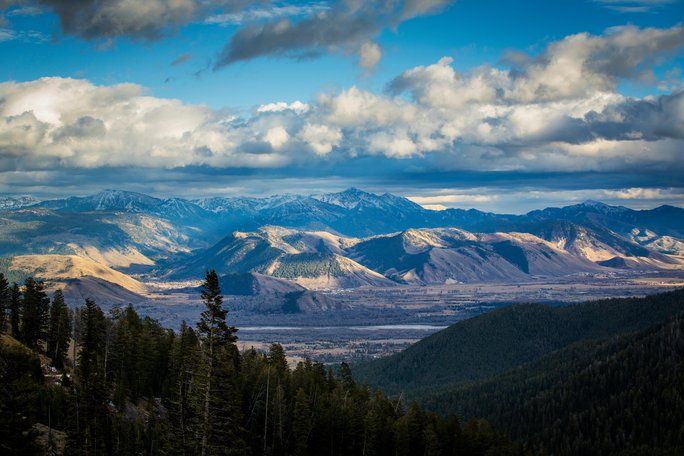
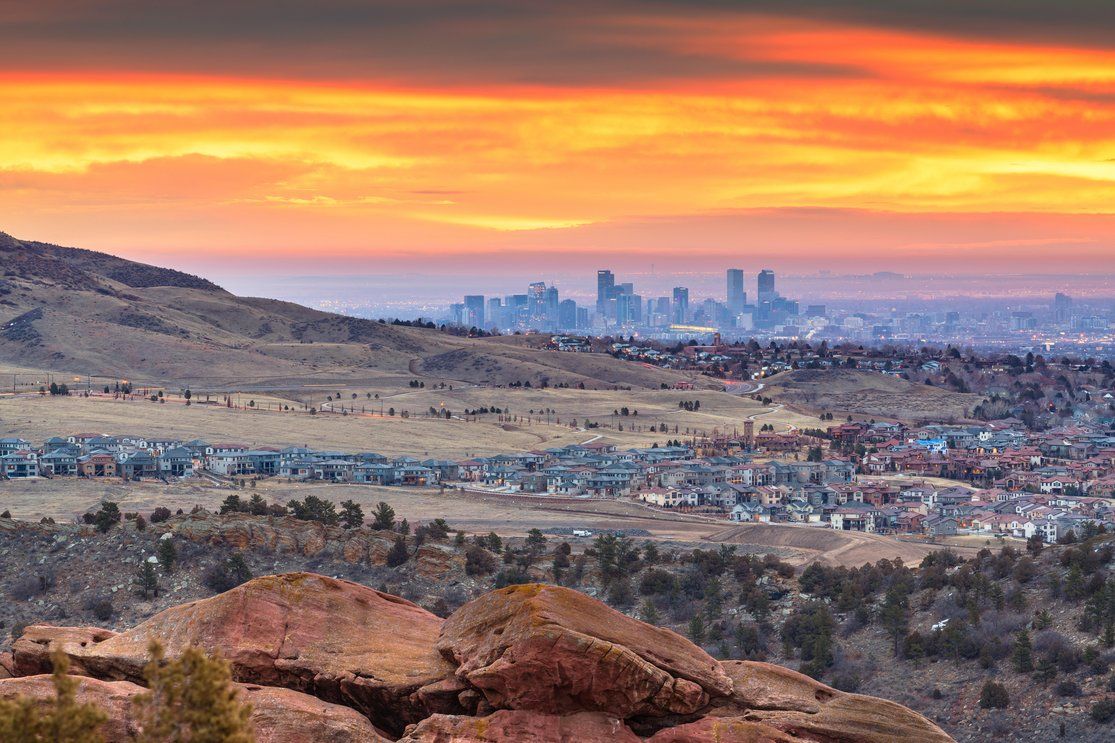

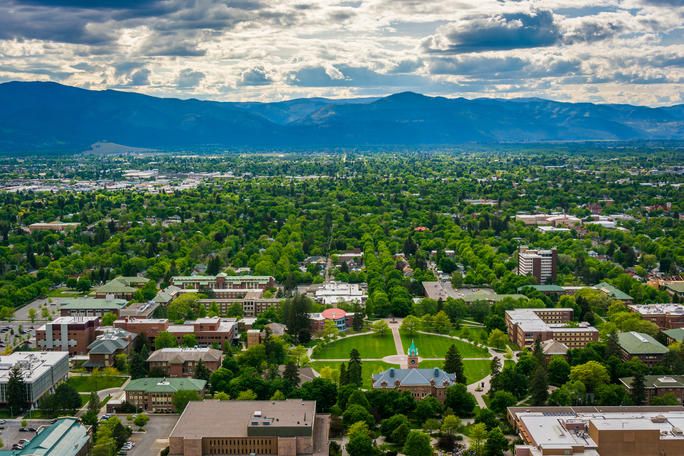






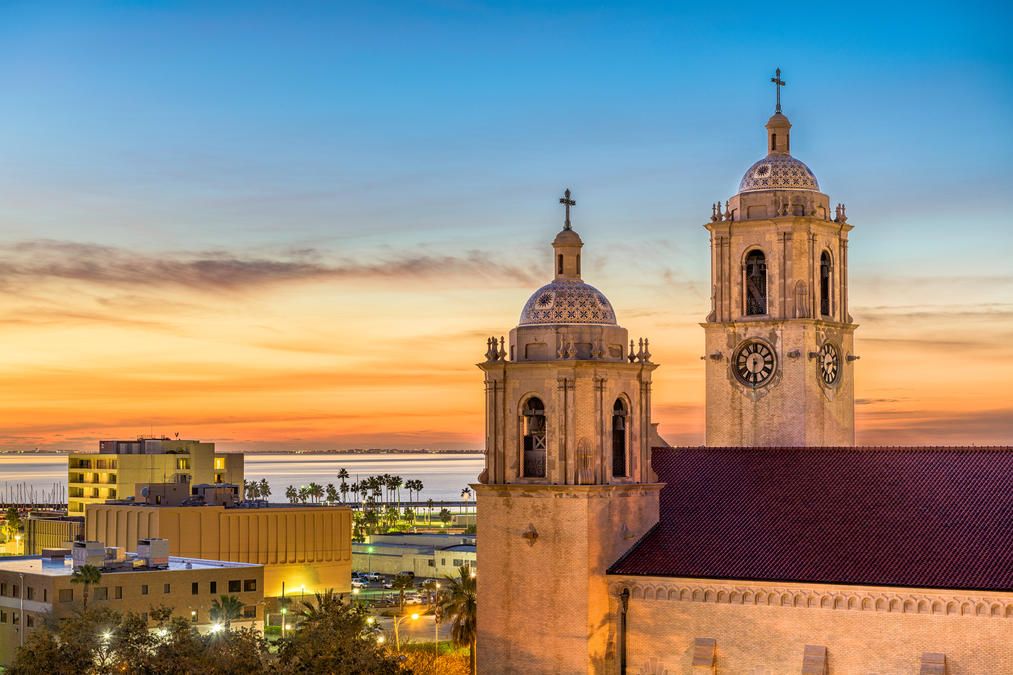

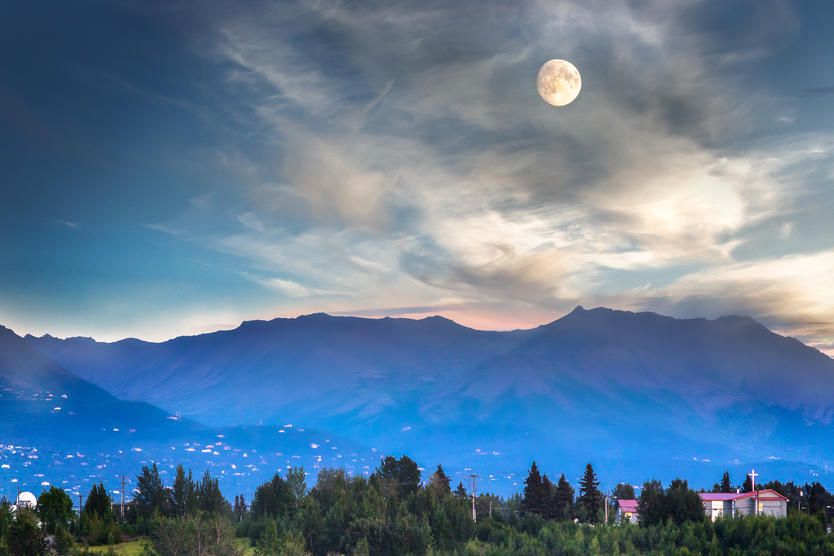
The data used in this analysis is from the National Interagency Fire Center. To determine the states most impacted by wildfires, researchers ranked them by total acres burned in 20252 In addition, researchers included the total number of fires in 20252, burned acreage as a proportion of the state’s total land area, and human-caused fire acreage as a proportion of total fire acreage.
Beyond the destruction, wildfires pose a serious health risk due to smoke inhalation. Fine particulate matter (PM2.5) from wildfire smoke can cause:
1. Stay Indoors: Reduce outdoor exposure when air quality is poor.
2. Use HEPA Filters: High-efficiency particulate air (HEPA) filters help trap wildfire smoke particles indoors.
3. Monitor Air Quality: Use real-time AQI tools like AirNow to stay updated.
4. Wear N95 Masks: If outdoors, N95 masks can filter fine particulate matter.
Wildfires are becoming larger, more destructive, and more frequent due to climate change and prolonged drought conditions. With 2025 shaping up to be a severe wildfire year, preparedness is key.
Stay informed, protect your health, and implement preventive measures to mitigate wildfire risks. One thing you can do is invest in high-quality replacement filters. Air filters reduce wildfire smoke inhalation by directly capturing ash and smoke particles from your indoor air.
Not all air filters are made equally, though. Only certain types of air filters can filter out wildfire smoke. Filterbuy’s MERV 13 air filters are the most effective for removing smoke from your home. MERV 13 filters can capture fine wildfire smoke particles without restricting airflow.

All HVAC systems are different, so choosing the right filter can be a challenge. The correct air filter can drastically improve indoor air quality and reduce smoke inhalation during fire season. However, the wrong air filter can break your system entirely. To help you find the perfect filter fit, take our MERV Match Quiz.
Wildfires are primarily caused by human activities (85%), such as unattended campfires, powerline malfunctions, and arson. Lightning also contributes but is less frequent.
Wildfire smoke carries fine particles that can travel thousands of miles, leading to hazardous air quality in areas far from the fire zones. Cities like New York have experienced AQI levels over 400, posing serious health risks.
The Air Quality Index (AQI) measures the concentration of pollutants in the air, such as smoke particles. An AQI over 150 is considered unhealthy, and anything above 300 is hazardous.
Using high-efficiency air filters in your HVAC system, such as MERV 13-rated filters, can help trap smoke particles and improve indoor air quality during fire season.
MERV (Minimum Efficiency Reporting Value) measures how effectively an air filter traps particles. A MERV 13 filter is ideal for capturing fine wildfire smoke particles without compromising airflow.
It’s recommended to change your air filters every 1-3 months during wildfire season, especially if your area is experiencing heavy smoke. Frequent replacements ensure your HVAC system runs efficiently and helps maintain air quality.
Air filters are made to capture particles. But, MERV 13 filters are best at effectively reducing smoke particles, improving indoor air quality and reducing health risks.
Wildfire smoke can cause respiratory issues, worsen asthma and COPD, irritate the eyes and throat, and lead to heart complications. Vulnerable populations, including children, the elderly, and those with pre-existing conditions, are at higher risk. So, if you have family members who have these conditions, it’s best to invest on high-quality HVAC systems for their health.
In addition to using air filters, consider sealing windows and doors to prevent smoke from entering, staying indoors when air quality is poor, and using N95 masks if you must go outside.
California experiences more frequent wildfires due to its dry climate, high winds, and long periods of drought. Additionally, 40% of all burned acres in the U.S. occurred in California in 2024, making it the state most at risk.
Climate change contributes to higher temperatures and prolonged droughts, creating ideal conditions for wildfires to ignite and spread. These changes have led to longer, more intense fire seasons each year.
Prepare by creating defensible space around your property, using fire-resistant materials, installing high-efficiency air filters in your HVAC system, and staying informed about local fire risks and air quality reports.